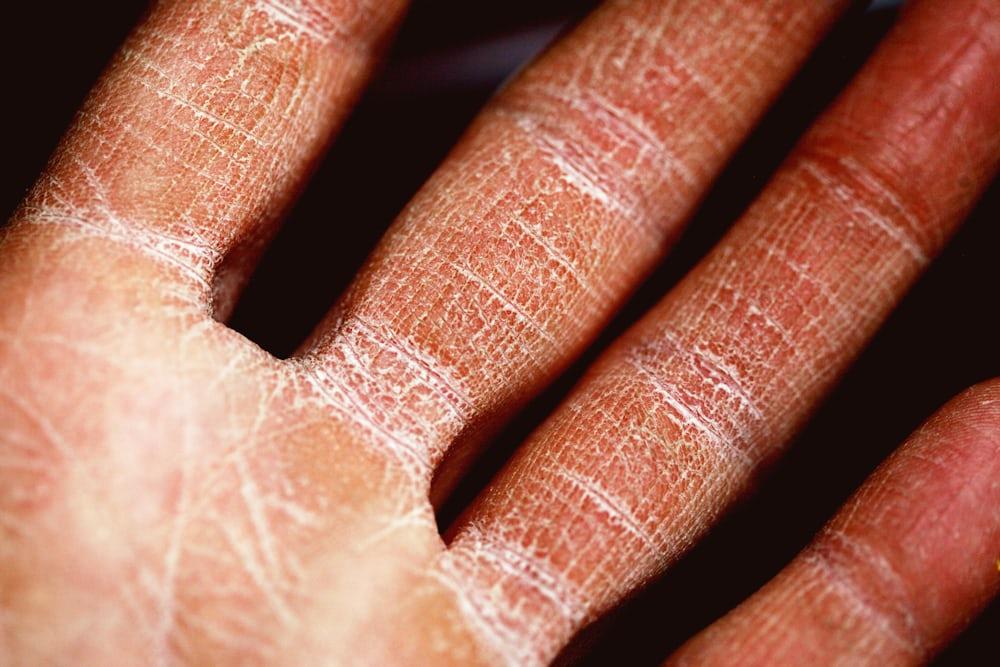With a staggering percentage of 15-20 global prevalence rates in children and 10% in adults, dermatitis remains one of the highest bothersome skin conditions.
Dermatitis is quite a common skin condition that makes the skin red, itchy and even swollen. There are a number of things that can cause this kind of skin condition.
An example is coming in contact with irritating substances and so on. While dermatitis isn’t something that will seriously harm your health, it still remains an uncomfortable and bothersome condition. If you’ve ever had a spot on your body that itches so bad, and how terrible it felt. Just imagine having to deal with that but not just one spot, several spots. In this article, we’re going to look at the symptoms and causes of dermatitis.

What is Dermatitis?
You’ve heard of the condition eczema, right? Eczema is a specific form of dermatitis. While dermatitis, on the other hand, is a term that is used to describe various skin conditions that inflame or irritate the skin.
In layman’s term:
Dermatitis = General term for skin inflammation.
Eczema = A specific form of dermatitis, often referring to atopic dermatitis.
Common Symptoms of Dermatitis
Dermatitis is a broad condition which has types such as:
- Atopic dermatitis
- Contact dermatitis
- Seborrheic dermatitis
- Nummular dermatitis
- Stasis dermatitis
Now, the symptoms of this condition can vary depending on the kind of dermatitis you have or the severity of the condition.
But some of the common symptoms include:
- Redness of the skin
- Itching
- Swelling of the affected area
- Rashes which appear as small bumps or rough patches on the skin
- Fluid-filled blisters
- Dry, flaky, and cracked skin
- Pain, if the skin is dry and cracked
What Causes Dermatitis?
There are a number of factors that can cause dermatitis either independently or in combination with other factors.
Allergens: An allergen is any substance that gives you an allergic reaction. This is because your body sees these substances as a threat so they react to protect you. These allergens could be anything from food, to pollen, to the tiny flakes of animal skin.
For allergens, you can be infected by it through direct contact like touching, inhalation, or ingestion. Once any of the contamination methods happen, your skin becomes red, swollen, and itchy. This type of dermatitis is called allergic contact dermatitis.
Irritants: Irritants can directly damage your skin. It’s totally different from allergies because irritants can physically harm the skin. Irritants could be harsh soaps, harsh skincare products, or even harsh cleaning chemicals.
When your skin is exposed to irritants, the first thing that happens is that the skin becomes really dry. Then it proceeds to become reddish and afterwards, inflamed. This type is called irritant contact dermatitis.
Genetics: How this works is that if your parents or close relatives have had dermatitis or some sort of allergic condition, you might have a higher chance of developing it too.
Environmental factors: These factors could be any elements or conditions in your surroundings that can affect your skin. Hot or cold weather, air pollution, and changes in humidity are some of the elements or conditions that can affect your skin.
For example, if your skin is exposed to hard weather or pollution, it can become dry, flaky and begin to crack. Afterwards, it could get inflamed and sore.
Stress: Stress is one factor that may seem lukewarm but is a good instigator of this condition. High stress levels do not cause dermatitis directly, however it can trigger flare-ups of dermatitis or even make the existing symptoms of the condition worse.
Hormones: Our hormones are bound to fluctuate during different natural stages of our lives. It could be through puberty, pregnancy, or even menstruation. That’s why some women notice that their dermatitis gets worse during pregnancy.
Conclusion
Lastly, there are certain people who are mostly likely to get this condition. Like people who have a family history of dermatitis. While dermatitis can occur at any age, certain types are more common at specific stages of life. For example, atopic dermatitis (eczema) often begins in childhood, while contact dermatitis can affect people of all ages.

















